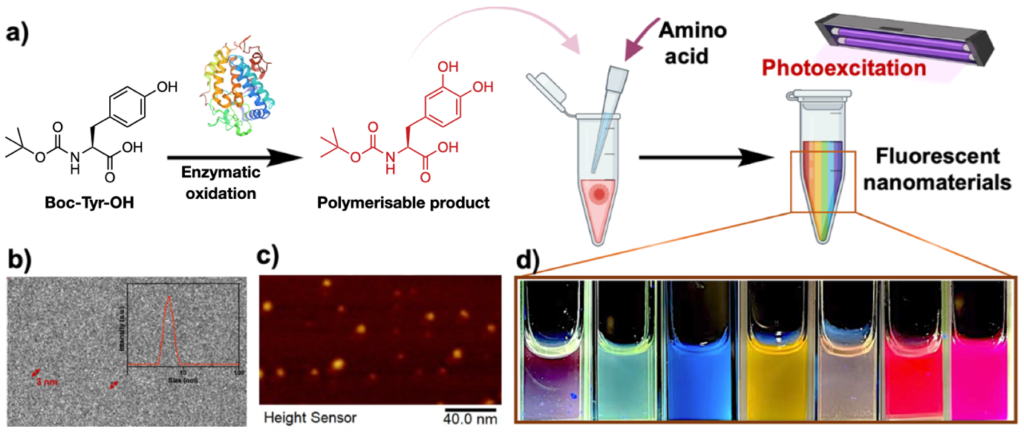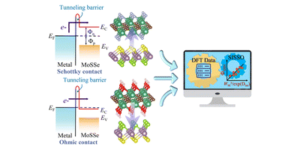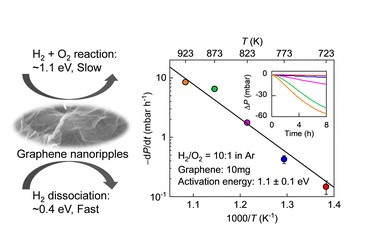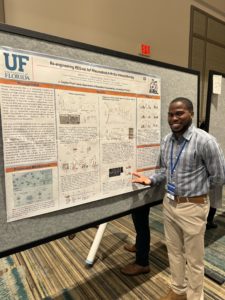Fluorescent reporters are invaluable tools for biomedical research like cell imaging, sensing or tracking analysis. In particular, the fluorescent labelling of nanomaterials remains a critical step in the development and evaluation of candidate nanomedicines. Being commercial fluorophores rather costly and fixed to a single emission, alternative strategies to produce labelled nanomaterials with tunable emission colour are highly coveted.
In a recent paper (DOI: 10.1039/d4nh00400k), Wang, Qi, et al. reported the versatile assembly of organic nanoparticles with adjustable emission wavelength by the enzymatic oxidation of the protected aminoacid N-(tert-butoxycarbonyl)-L-tyrosine. The biocatalytic oxidation of this aminoacid iduces its polymerisation into a variety of condensation products, which can co-assemble with unprotected aminoacids added post-polymerisation to generate nanoparticles ranging 5 to 10 nm in diameter. Interestingly, depending on the fed aminoacid post-polymerisation, the fluorescence spectra of the afforded nanoparticles could be shifted across the whole visible range. The fluorescent properties of these nanoparticles arise from the aggregation-induced emission of their constituent aminoacids, with different restrictions in bond rotation -and hence emission colour- for each nanoparticle formulation. Indeed, molecular dynamics simulations supported the aggregation mechanism and fixation of bond rotation, which together explain the assembly of these emissive nanoparticles.
The authors also demonstrated the excellent biocompatibility of these nanostructures in vitro and tracked their uptake by HeLa cells by confocal laser scanning microscopy. These results prove the great potential of this versatile technology to produce nanoparticles for biomedicine with tailored fluorescence from biomolecular precursors.
Overall, this paper lays down the basis for a new nanoparticle assembly platform with customisable fluorescence properties and excellent biocompatibility. The simplicity and modularity of this approach can make a strong impact on fluorescent nanotecnology, specially in the areas of drug delivery and cell taffick analysis, with broad application in the wider field of biomedicine.
Fig. 1 (a) Nanoparticle preparation scheme: sequential enzymatic oxidation of Boc-Try-OH into a reactive product that generates polymers, which can be doped with free aminoacids to form fluorescent nanoparticles. (b) Cryo-TEM and (c) AFM images of the afforded nanoparticles. (d) Visible emission of different nanoparticle formulations irradiated at 365 nm. Adapted from https://doi.org/10.1039/d4nh00400k with permission from the Royal Society of Chemistry.
To find out more, please read:
Full-color peptide-based fluorescent nanomaterials assembled under the control of amino acid doping
Yuhe Shen, Yulin Sun, Yaoyu Liang, Xiaojian Xu, Rongxin Su, Yuefei Wang and Wei Qi
Nanoscale Horiz., 2024, Advance Article
About the blogger
|
|























